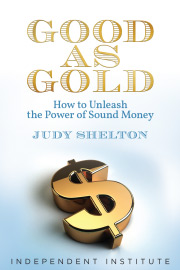A new focus on the need to cut federal government spending is a welcome development—especially if it leads to a complete financial and performance audit on the functions carried out by government agencies. One agency that has long escaped such scrutiny, though, is the Federal Reserve, our nation’s central bank, on the pretext that too much oversight might compromise its independence.
Such daintiness deserves to be dropped in light of the fact that the Fed has become quite the big spender of late. Since March 2022, when its monetary policy-making committee first began moving interest rates up to its current target range of between 5.25 percent and 5.50 percent from near zero, the Fed has paid out more than a half trillion dollars in interest on cash accounts held by commercial banks and money market mutual funds.
Why does the Fed provide such generous compensation to privately-owned financial enterprises to keep their money sitting idle? Fed policymakers will explain that doing so is their primary tool for reducing inflation. By paying interest on the funds that banks hold in their reserve balance accounts, the Fed offers banks a risk-free option that sets a high bar against which private sector borrowers must compete.









